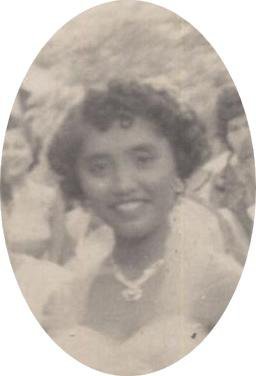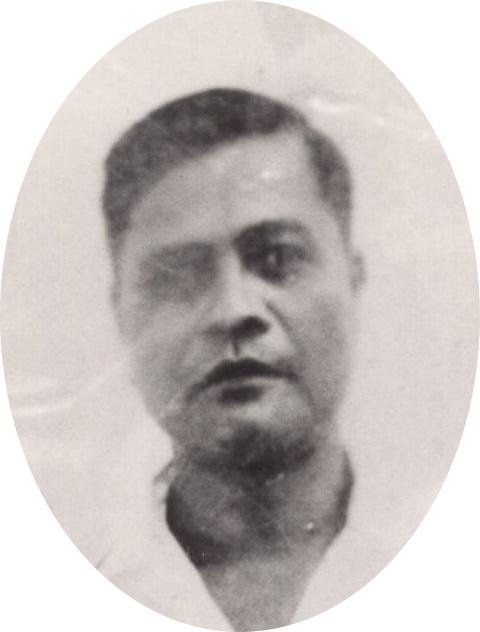Familian Jai (Yai)
I am a descendant of the Familian Jai. Historically our family has spelled the family clan name with the letter “J,” but it is pronounced with Chamorro letter “Y” as in Yona or yo'ku.
 My Jai lineage comes from my mother Rosita Leon Guerrero Cruz Punzalan, whose father was Ignacio Manibusan Cruz.
My Jai lineage comes from my mother Rosita Leon Guerrero Cruz Punzalan, whose father was Ignacio Manibusan Cruz.  Her grandfather was Juan Ignacio de la Cruz, and great grandfather was Vicente de la Cruz.
Her grandfather was Juan Ignacio de la Cruz, and great grandfather was Vicente de la Cruz.
I do not have much information on this portion of my ancestral roots so I decided to write about what I have collected to date. Perhaps someone who reads this article will able to add information on this part of my family.
This essay is actually dedicated to my mother Rosita. She continues to be the nucleus and backbone of my family. Sen magof yu put i fuetsan Nana-hu!
Hai’ na familia? Familian Hai’?
I have no idea what Jai means or its origins on how the clan name came about and at which generation point. However, I recently came across the “Dictionary and Grammar of the Chamorro Language of the Island of Guam,” by Edward R. Von Preissig published in 1918. Von Preissig uses the letter “j” to make the sound of the letter “h.” In specific and on page 13, he discusses the interrogative adjective of:
Jayi/Jaye [Hayi] and Jai/Jae [Hai], which denotes who? For example Preissig wrote:
- jayi sija na taotao? [Hayi siha na taotao?] (What people? Literally, who people?).
- jai na rai? [Hai’ na rai?] (What king? Literally, who king?).
Throughout history there are numerous spelling variations of Chamorro words and names. So I have not completely ruled out the possibility of one spelling forever changing the pronunciation of the Jai family clan name.
Matias Yay
I have also wondered if our clan may be related to Matias Yay.
According to history[1], Matias was one of three young Chamorros identified as fervent Christians from among the nobility of the Chamorro people. They were selected to embark on the Buena Socorro for Manila from Guam on 13 June 1671. From Manila they were sent to New Spain [Mexico]. Pedro Guiran, the brother of Matias, died during the voyage. When the other two, Ignacio Osi and Matias Yay made it to Mexico they petitioned the viceroy, Archbishop of Mexico, to send them a Governor and a Garrison. The Archbishop of Mexico, embraced the Ambassadors and graciously promised that their demand should be accorded.
Alias “Yac”
In early land record archives[2] several owners were referenced with their family clan names as their alias. In one land record, Estate No. 1638, I have come across a reference to my great-great grandfather Vicente. He is referenced as “Vicente de la Cruz alias Yac,” owning a property west of Antonia de los Santos property in the barrio of Santa Cruz, Pizarro Street, Agana. It is interesting to note the transcription error from “Yae” to “Yac.”
Tatan Jai
Furthering my quest to research my family roots, some family members have conveyed to me bits and pieces of information on my great grandfather Juan Ignacio de la Cruz, who was affectionately known as Tatan Jai. Family members recall him being a very strict man and arduous farmer. He subsequently died of his wounds after being gored by one of his bulls. I do not know much else about him but have come across some land documents. Over the years of researching Chamorro genealogy and census records I have observed a pattern for some families to maintain two residences: one was actually the main dwelling, the other was the ranch for farming.
According to some land records[3] I reviewed, Tatan Jai built a house around 1880, known as Estate 746 on Legaspi Street, Agana, which was officially recorded on June 14, 1900. To the east of this house was the residence of Vicente Mesa, on the west was Juan Duenas, and to the north was Vicente de Leon Guerrero.
Other land records I have come across on Tatan Jai, which I believe to be in the Palai, Piti area:
- Estate No. 745, six hectares of coconut land located in Oyso-Dasculo. Bordering the property to the south is a mountain, and on the west is a road which leads to Agat. To the north of the property is an estate owned by Antonio Mendiola and to the east is Vicente de la Cruz (I am not certain if this was Tatan Jai’s father or if he was another Vicente). Tatan Jai acquired this property in 1897 by mere occupation (a common practice back in the day) and was officially granted title June 14, 1900.
- Estate No. 1589, approximately 49 ares and 45 centares of land with irrigation in Mafulot, purchased from Jose Ignacio in January 1902. To the north and south of the property is a river; to the east is rice land of Leonicio Ignacio, and on the west side is the estate of Joaquin Ignacio.
- Estate No. 1590, approximately 20 ares of coconut land in Mafulot also purchased in January 1902 from Jose Ignacio. To the north of the property was a “Sabana;” the east was Leonicio Ignacio’s estate; toward the west was Joaquin Ignacio’s estate; and, to the south was an unnamed river.
I would like very much to hear from anyone who may have additional information to contribute. I also welcome any information that may need to be corrected.
Chamorro Roots, always a work in progress…

